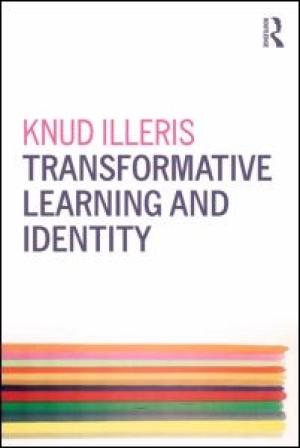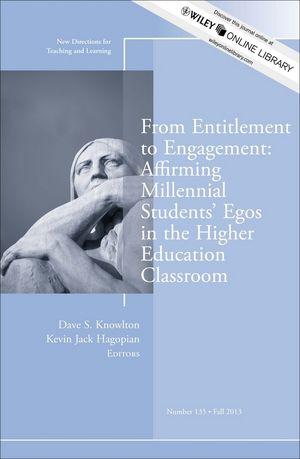Resources by Hee-Kyu Heidi Park

The subject of theology and religion is related to the human desire for and experience of transformative inner experience. Contemporary theological education tends to especially draw students who are internally motivated for their own transformation or for facilitating other’s transformation through their ministry. In this sense, Transformative Learning and Identity touches upon the DNA of theological and religious education. This book is one of the fruits of the author’s research on transformative learning, which developed from another of his books, How We Learn (London, U.K.: Routledge, 2007),a comprehensive account of general learning theory. In Transformative Learning and Identitythe author reviews the theoretical development of the concept of transformative learning through a survey of knowledge and research to “understand and explain how the most rewarding and far-reaching human learning processes take place and why and how they have become so important in today’s world” (xiii). As such, this is not a self-help book with pedagogical strategies. What the author means by “today’s world” carries the foundational assumptions of this book. He calls this contemporary context late-modernity which includes an economic environment that allows upward mobility among classes heavily dependent on the performance of individuals. For him, this is the context of the individualism from which the quest for identity rises. Individualization provides the possibility “to create one’s totally own existence in the very best and personal way – if only one was able to manage all the many life situations and make the right choices all throughout” (62). With such an ideal of individual choices, the responsibility of one’s own accomplishment of the ideal rests on individual will and capacity. Transformation then becomes a crucial task for individuals to accomplish. Illeris’ main conceptualization follows from Jack Mezirow’s understanding of transformative learning – a process of meaning creation, of which elements like individual experience, critical reflection, dialogues, holistic orientation, awareness of context, and authentic relationships are important building blocks. Using this foundation, Illeris surveys the thoughts of several scholars to further exploration of transformative learning. After a brief survey of psychoanalytic theories of change and a cursory survey of emancipating pedagogical theories including Paulo Freire’s critical theory, and one feminist approach developed in the 1980s, he surveys the theories of Yrjö Engeström, Robert Kegan, Peter Jarvis, and Mark Tennant. Through his analysis of the development of various theories in Part I, he concludes that transformative learning “comprises all learning that implies change in the identity of the learner” (40). Thus, he devotes Part II to identity development through the theories of Erik Erikson, Thomas Ziehe, Kenneth Gergen, Mark Tennant, Etienne Wenger, Pierre Bourdieu, Anthony Giddens, and Zygmunt Bauman. In Part III, he examines transformative learning from different standpoints such as developmental stages, the processes of progressive and regressive transformation, motivation and identity defense, personality and competence, and its habitus as in school, work, individual, and society. The author’s intent is to build a more authoritative definition of transformative learning through a theoretical survey of the history of the concept. Along with the survey, his understanding of regressive transformative learning is an important contribution. Regressive transformative learning happens when expected progressive transformative learning is frustrated but still results in identity change. When it happens simultaneously with another progressive transformative learning experience, it can result in identity transformation. There are several points that may need to be augmented to bring out this book’s full potential for religious and theological education. As Illeris writes from his location in Denmark, despite some experience in Teachers College, Columbia University, this work seems to mostly assume a middleclass European or European American context. Hence, it needs to be translated with intercultural sensitivity to find relevance in the context of diversity of cultures, power dynamics, socio-economic classes, and genders in the twenty-first century higher education. A discussion about emancipatory transformation and deeper reflection on critical pedagogies like those of Freire and McLaren would help translate this work into theological school contexts. Another useful dialogue would involve the topic of spirituality. From a Christian point of view, transformative learning can be conceptualized as involving the spiritual engagement of a person. This book is a helpful theoretical resource for those who want to conceptualize impactful teaching and learning experience. I recommend exploring this book with a theological lens in order to dialogue with the different theories surveyed: it could yield helpful dialogical points that could advance the search for realization of transformative learning in theological school contexts.

“How bad has it gotten in your class?” the first article’s author asks. “Students eating steaming plate lunches, kissing passionately, conducting loud phone conversations, playing video poker?. . . Asking to be excused from class to barbecue chicken at the go-kart track for a radio station where the student interned last summer?” (7). If these examples sound even remotely familiar, you may find this issue of New Directions for Teaching and Learning helpful. This volume addresses the challenge of teaching millennial students, born between 1982 and 2001, who are often labeled as coming to higher education with an attitude of entitlement that can frustrate professors. The first three chapters explore the theory behind this volume. The first two chapters reframe the concept of entitlement by reflecting on the structure of higher education classrooms (chapter 1) and seeing the psychological vulnerability of students (chapter 2) as an opportunity for ego engagement – a process that the editors describe as “productively affirming student’s egos” to offer “new opportunities for deep learning and ever-strengthening intellectual rigor” (2). The third chapter is an empirical study that explores how students feel they deserve entitled treatment in higher education. The second cluster of articles explore practice and application of reframing entitlement into ego engagement in specific areas. Chapter 4 explores ways to construct a syllabus that invite student engagement proactively, and chapter 5 lays out several practical suggestions professors can utilize to conceptualize their pedagogies. Chapters 6 and 7 provide case studies of actual classroom assignments that engage millennial students’ egos successfully: chapter 6 describes an assignment that immersed millennial students in discipline-based political activities to foster positive ego engagement and chapter 7 describes an assignment that engaged students in narrative pedagogy through digital storytelling. Chapters 8 and 9 explore ways to engage students through already existing classroom practices. For example, chapter 8 provides specific insights about engaging students through technological gadgets and provides practical suggestions for teaching. Chapter 9 explores ways to engage students before and after class periods to affirm their egos. The rest of the three chapters explore ways to engage the moral sense of millennial students by involving them in social justice issues and student-directed goal setting. The author invites faculty to consider their own reactions to student incivility as possibly a response to a professor’s bruised ego ? an over-dependence on official authority based on position rather than on their ability to help students learn effectively. While graduate level professors may experience students’ sense of entitlement less bluntly than is described in some of the articles, I have sensed in my own teaching that the vocation of religious leadership tends to attract people with a sense of self-importance that poses challenges similar to those described in this volume. What the authors conceptualize as ego engagement is a model for empowering students who appear to be aloof to the subject matter but who are seeking meaningful engagement that leads them to deeper growth. From Entitlement to Engagement offers practical advice for fostering creative teaching that meets students’ psychological needs and motivates them to find growth through their own learning tasks.